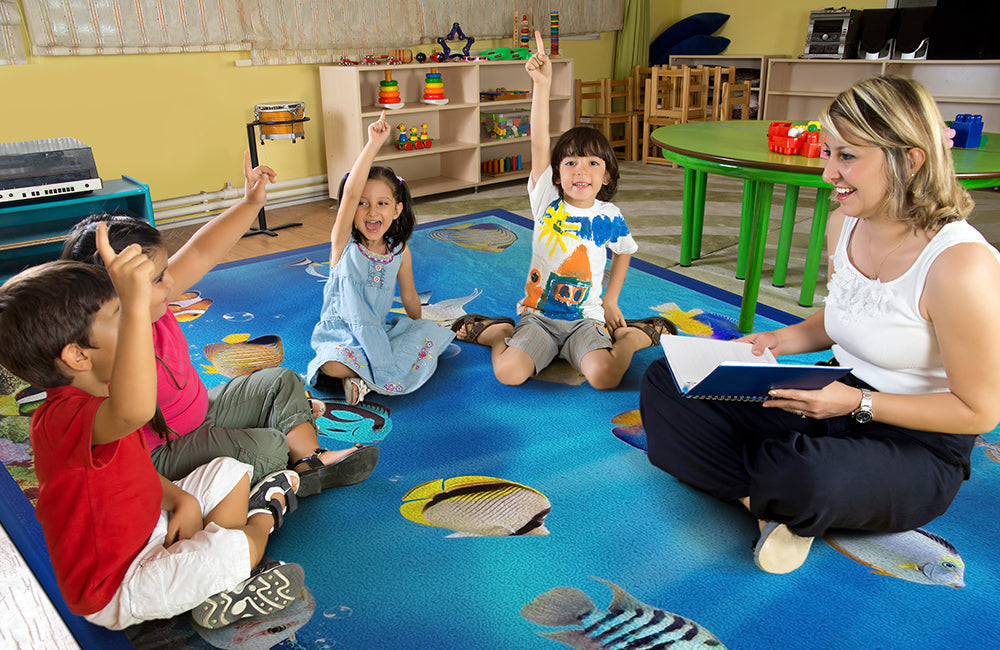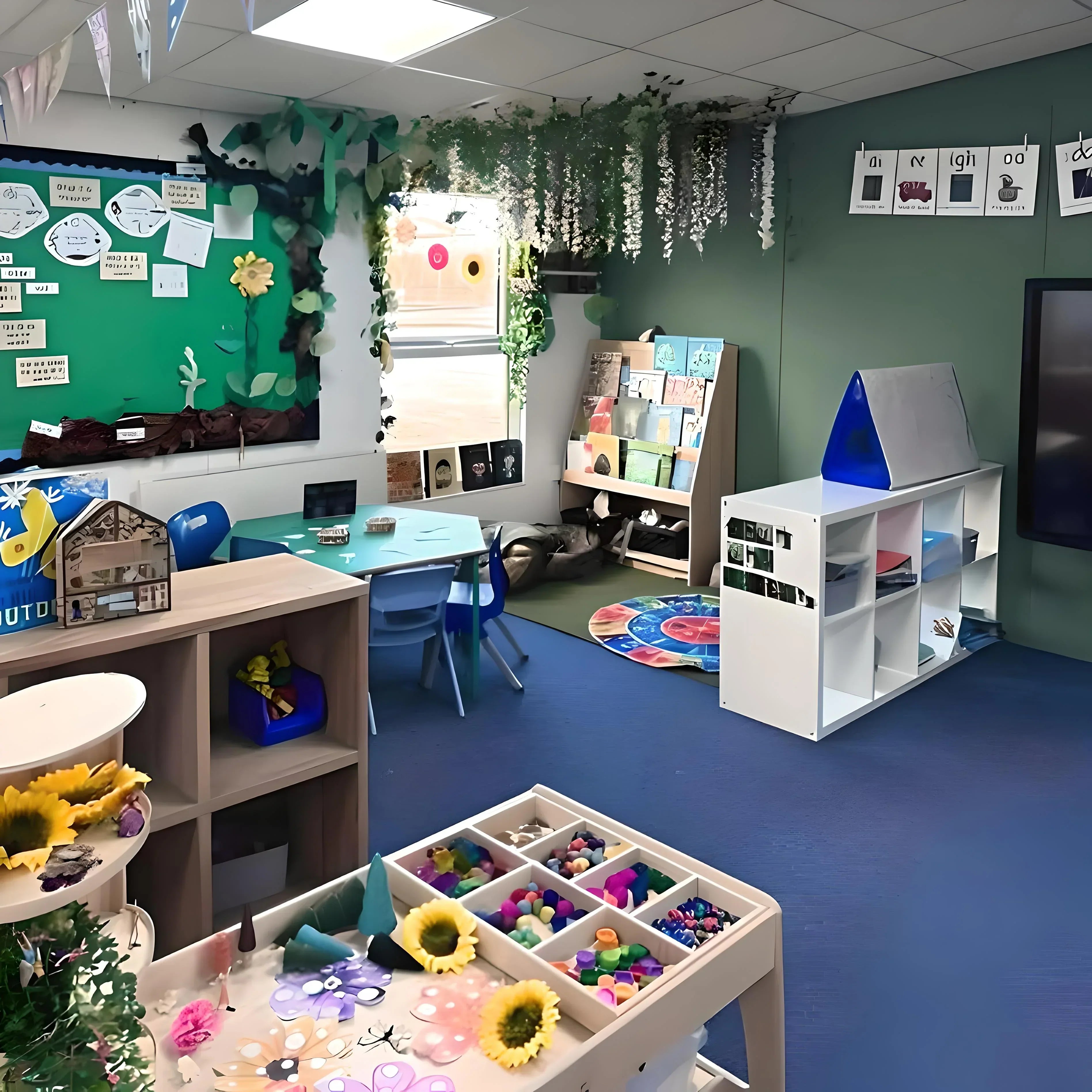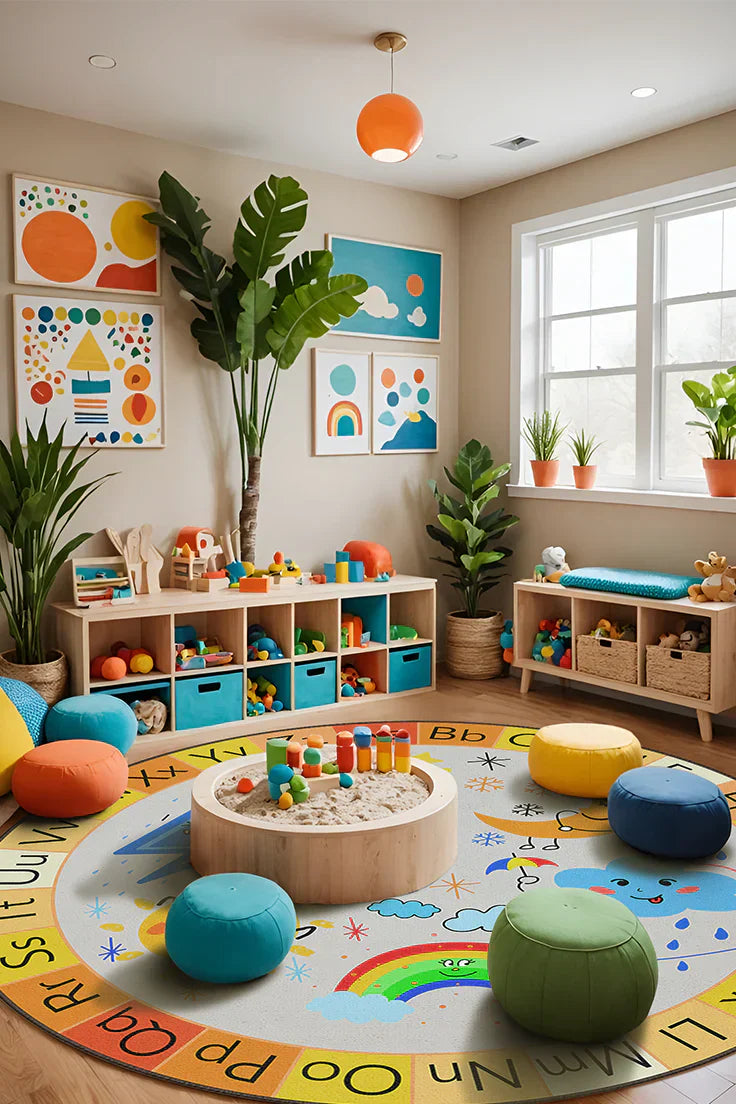The Earth Tone Revolution: Why Warm Colors Are Taking Over Classrooms
Interior design trends have shifted from cool and minimalist to cozy and cocooning, inspiring an array of warm neutrals that perfectly align with educational goals.
This movement toward earthy shades isn't just about trends but rather a deeper, more thoughtful approach to how we experience our learning spaces.
The Science Behind Warm Color Psychology
Warm tones like terracotta, caramel, and soft ochres have a coziness to them that creates spaces that feel nurturing and good for the soul. In classroom settings, these colors provide:
- Enhanced Focus: Warm earth tones create calming environments that help reduce anxiety and improve concentration
- Emotional Regulation: Earth tones make it easy to create a serene environment and pair effortlessly with various decor elements
- Universal Appeal: These colors work beautifully across different age groups and learning styles
- Sensory Comfort: Natural color palettes provide visual rest periods that support sustained learning
Popular 2025 Earth Tone Palette for Educational Spaces
Primary Warm Tones:
- Sienna & Burnt Orange: Rich, energizing colors that stimulate creativity while maintaining warmth
- Terracotta & Clay: Grounding shades that promote stability and focus
- Umber & Deep Brown: Sophisticated tones that add depth without overwhelming
- Caramel & Saffron: Lighter warm tones that brighten spaces while maintaining coziness
Supporting Neutral Tones:
- Sandy Beige: Perfect for larger surface areas and background elements
- Warm Taupe: Versatile shade that complements both bold and subtle color schemes
- Soft Ochre: Gentle warm tone ideal for creating welcoming gathering spaces
Retro Patterns Making a Comeback in Educational Design
Retro styles are making a strong comeback with a modern twist, with vintage furniture, bold patterns, and nostalgic decor items infusing contemporary spaces with personality.
In classroom settings, this translates to carefully curated retro elements that enhance rather than distract from learning objectives.
Educational Benefits of Retro-Inspired Patterns
Cognitive Engagement: Patterns with lots of detail often feel like they come from a time when weaving was an art form, providing rich visual stimulation that can enhance pattern recognition and visual processing skills.
Cultural Learning: Retro patterns offer opportunities to discuss different historical periods, cultural movements, and artistic traditions within curriculum contexts.
Creative Inspiration: Designers are incorporating psychedelic swirls, hand-drawn flowers, and paisley prints in mustard yellows, burnt oranges, and deep purples, which can inspire student artwork and creative projects.
Key Retro Pattern Trends for 2025 Classrooms
Geometric Revival: Art Deco patterns are making a comeback in interior design, characterized by geometric shapes, luxurious materials, and metallic accents
Vintage Florals: Large-scale floral patterns reminiscent of the 1960s and 70s, updated with modern color palettes
Abstract Modernism: Clean geometric forms that combine retro aesthetics with contemporary functionality
Nature-Inspired Designs: Bringing the Outdoors Inside
Nature-inspired patterns are making a big impact, with designs often simple yet elegant that fit perfectly into natural settings and create serene, eco-friendly vibes.
This trend reflects growing awareness of environmental education and the proven benefits of biophilic design in learning environments.
Educational Value of Nature-Inspired Classroom Rugs
Environmental Education: Nature patterns provide daily opportunities to discuss ecosystems, wildlife, and environmental stewardship
Stress Reduction: Naturalism and organic design create designs that feel authentic and grounded, reflecting contemporary values like sustainability, mindfulness, and emotional connection
Seasonal Learning: Nature-themed classroom rugs can support discussions about seasons, weather patterns, and natural cycles
Multi-Sensory Learning: Fluid shapes inspired by rivers, leaves, and organic patterns combined with sustainability themes incorporate eco-conscious messages
Popular Nature-Inspired Design Elements
Organic Patterns: Free-flowing nature with no repeats that follow no rules, yet offer plenty of patterned structure to a space
Botanical Illustrations: Detailed plant and flower designs that can support science curriculum
Animal Motifs: Age-appropriate wildlife patterns that enhance zoology and habitat studies
Landscape Elements: Abstract representations of mountains, forests, and natural formations
How Booooom Jackson Classroom Rugs Embrace 2025 Trends
Our classroom rugs collection perfectly captures the essence of 2025's leading design trends while maintaining the safety, durability, and educational value that classroom environments demand.
Safety-First Design Philosophy
Every Booooom Jackson rug meets rigorous ASTM International and CPSC safety standards, featuring:
- Non-toxic Materials: Free from PVC, phthalates, and lead
- Slip-Proof Backing: Weighted bottom design increases slip resistance by 80%
- Hypoallergenic Properties: Resists dust mites, mold, and mildew—perfect for children with allergies
- Durable Construction: Reinforced edges prevent fraying in high-traffic classroom environments
Educational Enhancement Features
Our classroom management rugs are designed to support both trending aesthetics and educational goals:
- Interactive Learning Elements: Patterns that encourage student engagement and participation
- Developmental Support: Designs that spark creativity, motor skills, and teamwork
- Easy Maintenance: Simple vacuum cleaning with no special equipment required
- Versatile Applications: Perfect for circle time, reading areas, and group activities
Trend-Forward Color Integration
Our 2025 collection incorporates the season's most popular earth tones:
- Warm Terracotta Tones: Creating cozy, grounding learning environments
- Rich Sienna Shades: Adding depth and sophistication to classroom design
- Natural Umber Hues: Providing versatile backgrounds for diverse classroom activities
- Complementary Neutral Palettes: Supporting the educational color psychology that enhances learning
Practical Applications: Implementing 2025 Trends in Your Classroom
Creating Defined Learning Zones
Classroom rugs featuring individual sitting spots eliminate disputes over personal space during circle time and reduce transition times between activities by an average of 4.5 minutes per transition.
This efficiency gain translates to over 30 additional instructional minutes daily.
Zone Design Strategies:
- Reading Corners: Soft earth tones create calming spaces for independent reading
- Group Work Areas: Colorful retro rugs with geometric patterns can help organize collaborative activities
- Circle Time Spaces: Nature-inspired designs provide engaging focal points for discussions
Supporting Different Learning Styles
Visual Learners: Rich patterns and warm colors provide engaging visual stimulation
Kinesthetic Learners: Textured surfaces and defined spaces support movement-based learning
Auditory Learners: Carpet helps meet acoustic standards because it is 10 times more efficient in reducing noise compared to other flooring options
Age-Appropriate Design Selection
Early Childhood (Ages 3-6):
- Softer earth tones that don't overstimulate
- Simple nature patterns that support vocabulary development
- Clearly defined individual spaces for developing spatial awareness
Elementary (Ages 6-12):
- More complex retro geometric patterns that challenge visual processing
- Educational elements integrated into nature-inspired designs
- Collaborative spaces that support group projects
Middle School (Ages 12-14):
- Sophisticated earth tone palettes that feel mature
- Abstract patterns that can inspire creative projects
- Flexible arrangements that support diverse learning activities
The Psychology of Color in Learning Environments
There's an emotional resonance to earth tones—one that reminds us of slow living, meaningful moments, and the warmth of the natural world.
Research consistently shows that classroom environments significantly impact student behavior, engagement, and academic performance.
Creating Emotional Safety Through Design
Warm Color Benefits:
- Increased feelings of security and belonging
- Enhanced willingness to participate in discussions
- Reduced anxiety during testing and evaluation periods
- Improved teacher-student relationship quality
Pattern Psychology:
- Geometric patterns can improve mathematical thinking
- Nature patterns support environmental awareness and stewardship
- Retro designs can spark curiosity about history and cultural evolution
Budget-Friendly Implementation Strategies
Phased Approach to Classroom Updates
Phase 1: Foundation
- Start with one high-impact area like the main gathering space
- Choose versatile earth tones that complement existing classroom elements
- Focus on durability and educational value for maximum long-term benefit
Phase 2: Expansion
- Add complementary pieces to create cohesive design flow
- Incorporate nature-inspired learning elements that support curriculum goals
- Consider seasonal rotation options for sustained engagement
Phase 3: Refinement
- Fine-tune color balance and pattern integration
- Add specialized areas for different types of learning activities
- Evaluate and adjust based on student response and educational outcomes
Maximizing Educational Investment
Quality classroom rugs provide multi-year value through:
- Durability: Professional-grade construction withstands heavy classroom use
- Versatility: Designs that support multiple curriculum areas and age groups
- Adaptability: Neutral base tones that work with changing classroom themes
- Professional Development: Enhanced classroom management capabilities
Maintenance and Longevity in Educational Settings
Practical Care for Earth-Toned Classroom Rugs
Daily Maintenance:
- Regular vacuuming to maintain appearance and hygiene
- Immediate attention to spills to prevent staining
- Rotation of high-traffic areas to ensure even wear
Long-term Care:
- Professional cleaning during school breaks
- Proper storage during extended breaks
- Documentation of care procedures for substitute teachers
Sustainability Considerations
Sustainability continues to dominate the design world, and rugs are no exception, with eco-friendly materials such as jute, recycled PET yarn, and organic cotton making waves. Choose classroom rugs that support environmental education through:
- Sustainable manufacturing processes
- Recyclable or biodegradable materials
- Local production to reduce transportation impact
- Long-lasting construction that minimizes replacement needs
Looking Ahead: Future Trends in Educational Design
Technology Integration
Future classroom rugs may incorporate:
- Interactive elements that respond to movement
- Integrated technology for augmented reality learning experiences
- Smart sensors that track usage patterns and student engagement
- Adaptive patterns that change based on curriculum needs
Personalization and Customization
Customization is another emerging trend, with homeowners increasingly looking for designs that reflect their personal style. Educational applications include:
- School-specific color schemes and mascots
- Curriculum-aligned custom patterns
- Community-designed elements that reflect local culture
- Student artwork integration for ownership and pride
Conclusion: Transforming Learning Through Thoughtful Design
The 2025 classroom rug style trends of warm earth tones, retro patterns, and nature-inspired designs offer educators unprecedented opportunities to create learning environments that truly support student success.
By understanding the psychology behind these design choices and implementing them thoughtfully, teachers can create classrooms that feel both contemporary and timeless, engaging and calming, beautiful and functional.
The beauty of earthy tones is their timeless appeal—unlike bold, saturated hues that might date a room in a few years, these colors have staying power.
This makes them ideal investments for educational settings where longevity and adaptability are essential.
As we continue to learn more about the connection between physical environment and educational outcomes, it becomes clear that every design choice matters.
From the cognitive benefits of organized classroom learning spaces to the emotional impact of color psychology, thoughtful classroom design represents a fundamental investment in student success.
Ready to bring 2025's most exciting design trends to your classroom? Explore our collection of safety-certified, educationally-designed classroom rugs that perfectly capture the warmth, creativity, and natural beauty that define this year's most compelling design movement.
Transform your learning space into an environment where students thrive, teachers excel, and learning becomes a joyful journey of discovery.




Leave a comment
This site is protected by hCaptcha and the hCaptcha Privacy Policy and Terms of Service apply.